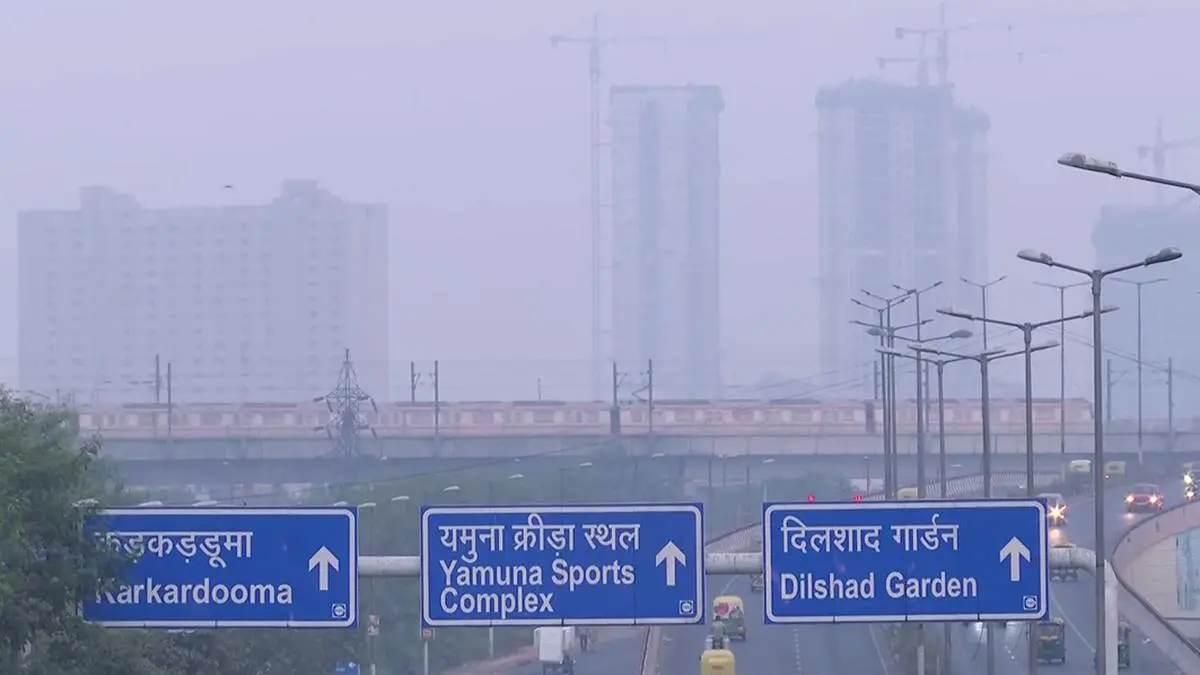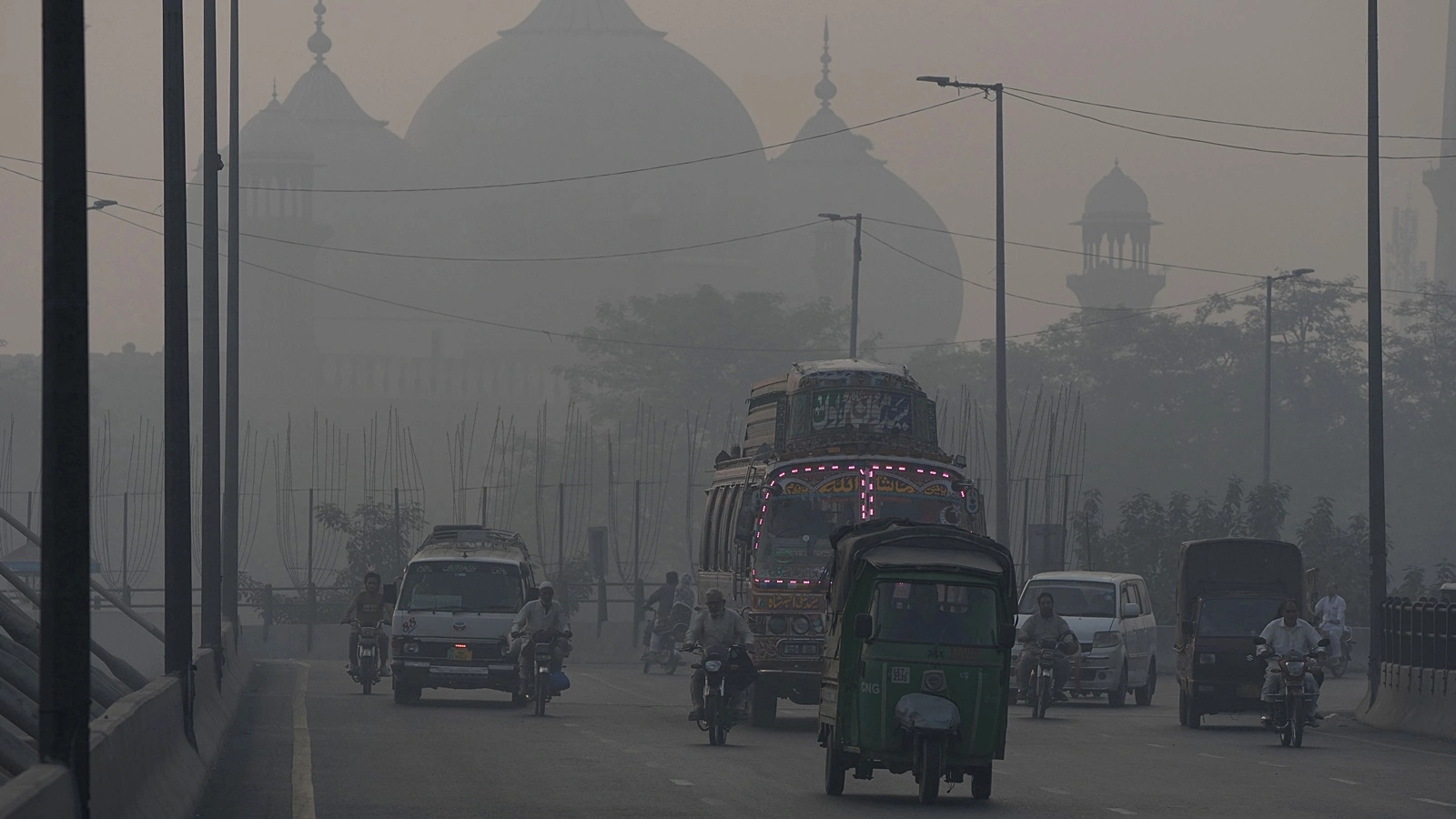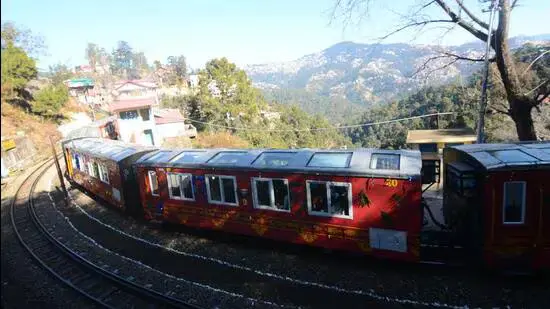As the winter season neared, a light haze of smog blanketed the national capital, with the Air quality index in Delhi still classified as “very poor.” The Delhi air pollution become severe as Diwali vacations ends.
On Monday, November 4, 2024, the Delhi AQI exceeded 300 in numerous regions of the national capital, as reported by the Central Pollution Control Board (CPCB).
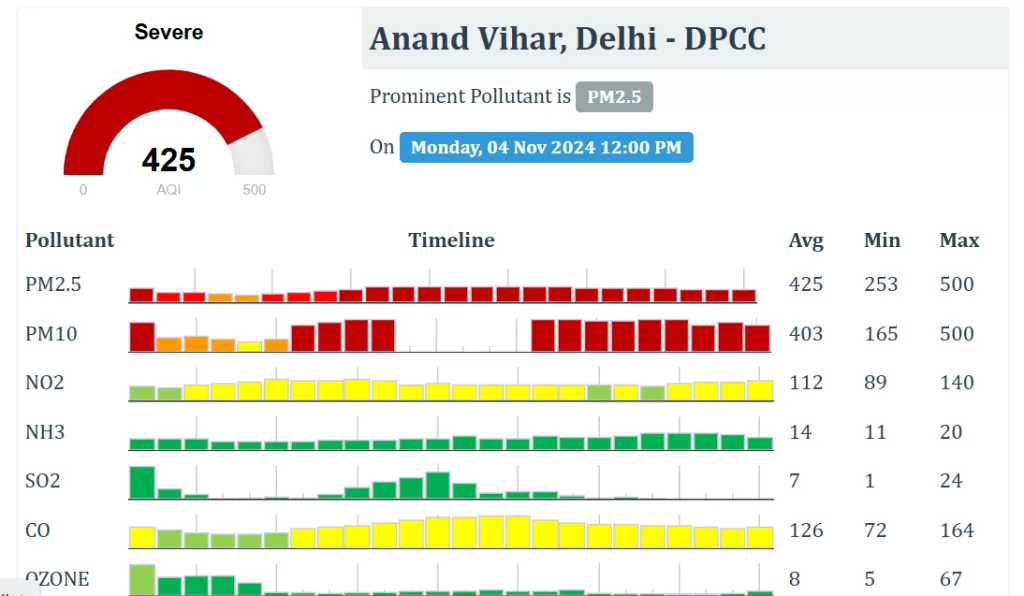
Around 7:00 AM on a Monday, the Delhi AQI in New Moti Bagh was rated at 400, while RK Puram, Dwarka Sector 8, and Anand Vihar all had an AQI of nearby 425. ITO had an AQI of 347. These locations all indicated ‘very poor’ air quality, which presented serious health hazards.
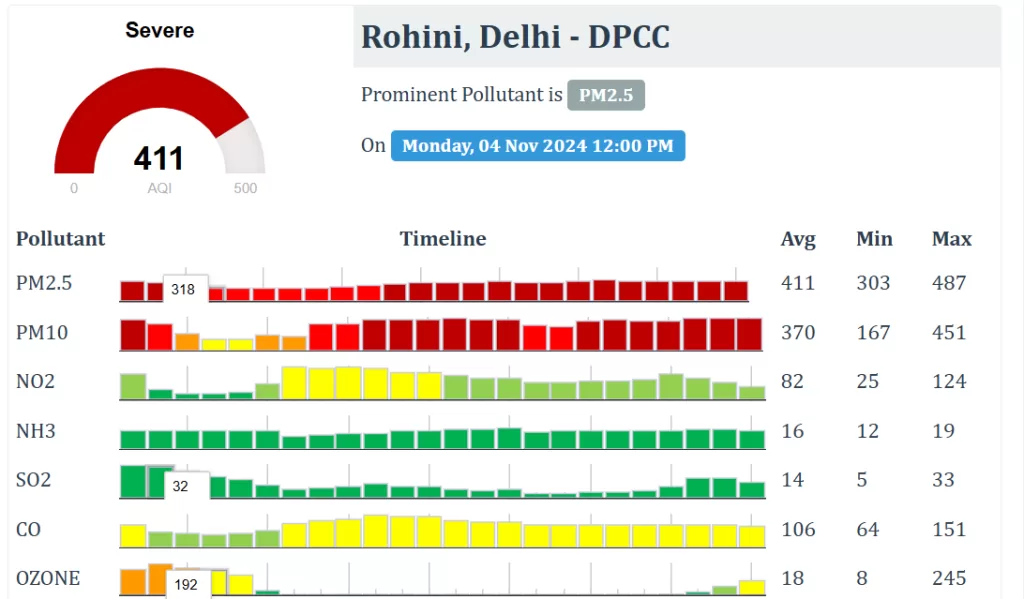
The Air Quality Index at Vivek Vihar stood at 421, while it was 409 in Ashok Vihar, pushing the air quality level into the “severe” category.
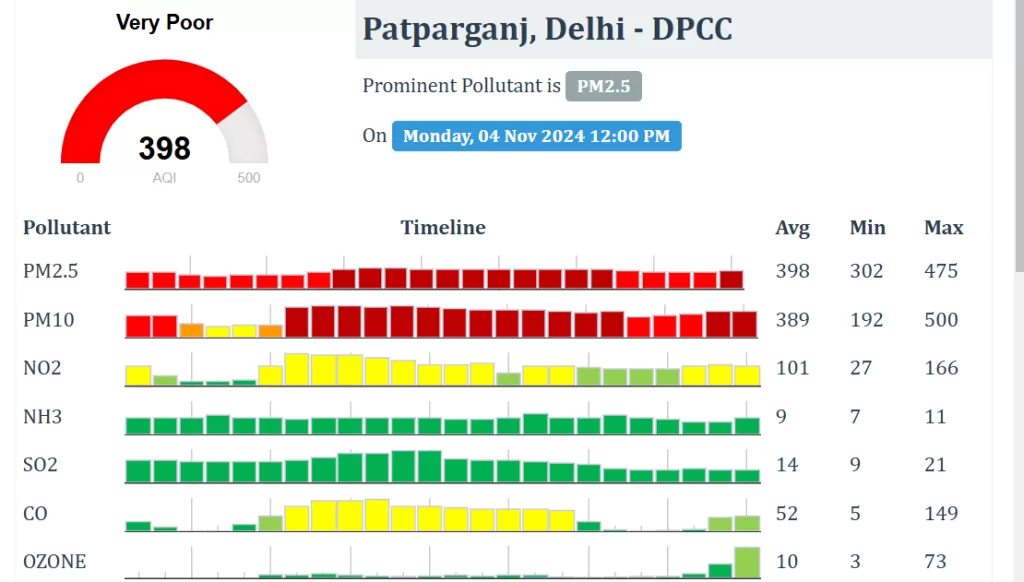
An AQI is labeled as “poor” when it falls between ‘200 and 300’, “very poor” when it’s between ‘301 and 400’, “severe” when it’s between ‘401 and 450’, and “severe plus” when it’s above ‘450’.
The IQair website states that the air pollution, assessed by PM2.5 levels, stands at 59 times greater than the WHO-recommended safe threshold. Ongoing contact with elevated levels of pollution can lead to serious health issues, including harm to the lungs and the brain.
Delhi AQI: How Does the Government Address Air pollution?
The Environment Minister of Delhi, Gopal Rai, mentioned that approximately 200 portable air purification devices will be distributed throughout the national capital to fight against dust pollution. In an interview with ANI on Saturday, Gopal Rai stated that the Delhi administration is persistently taking measures to address the increasing pollution levels.
